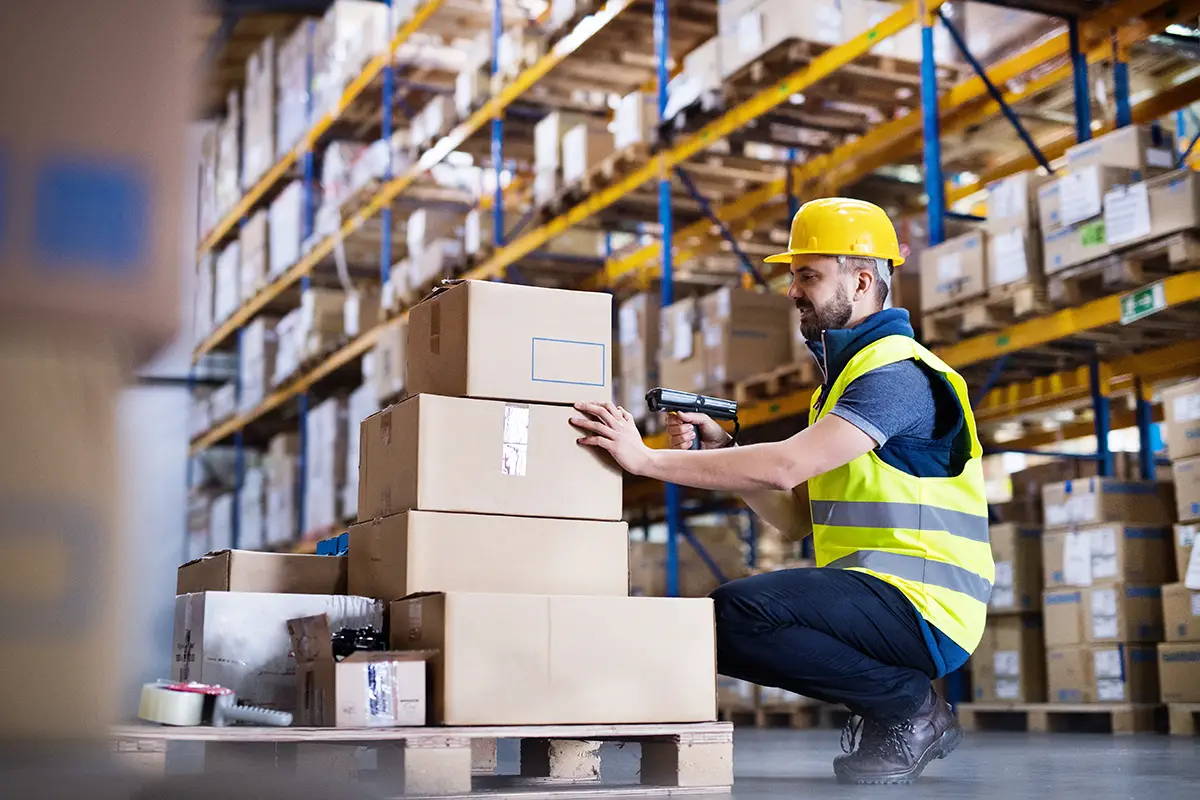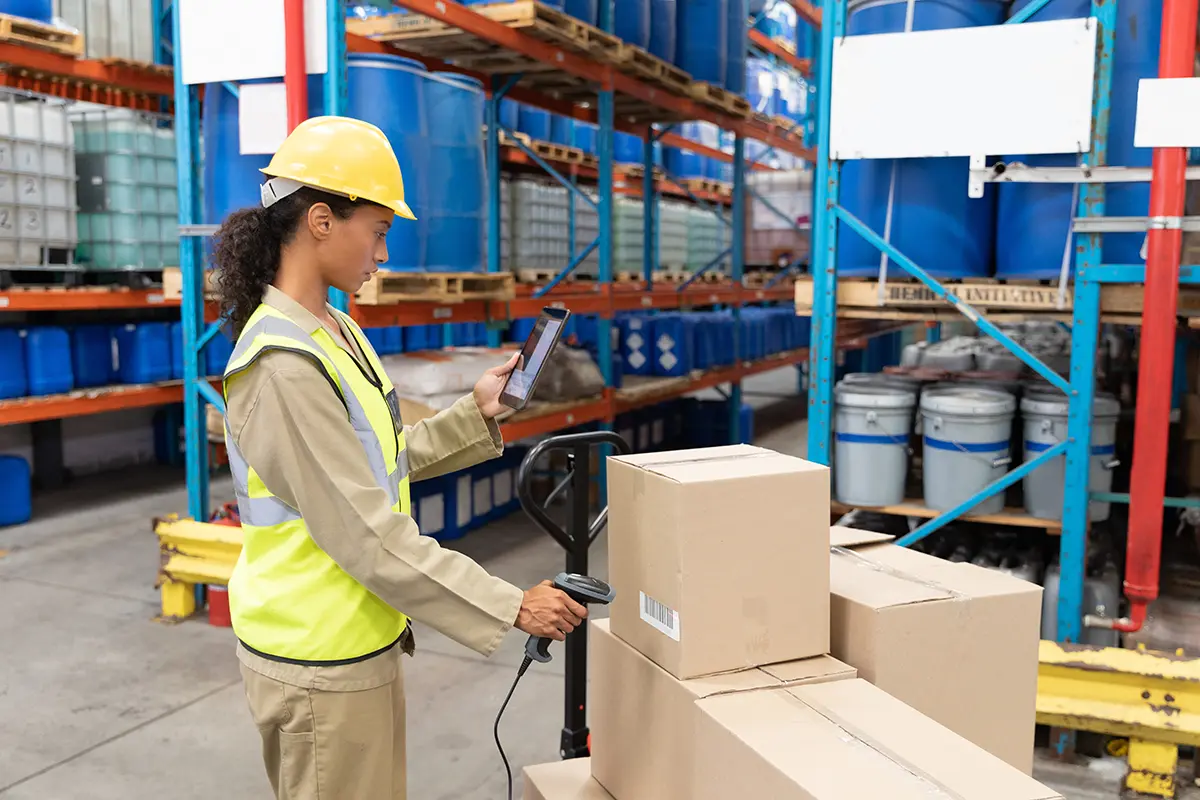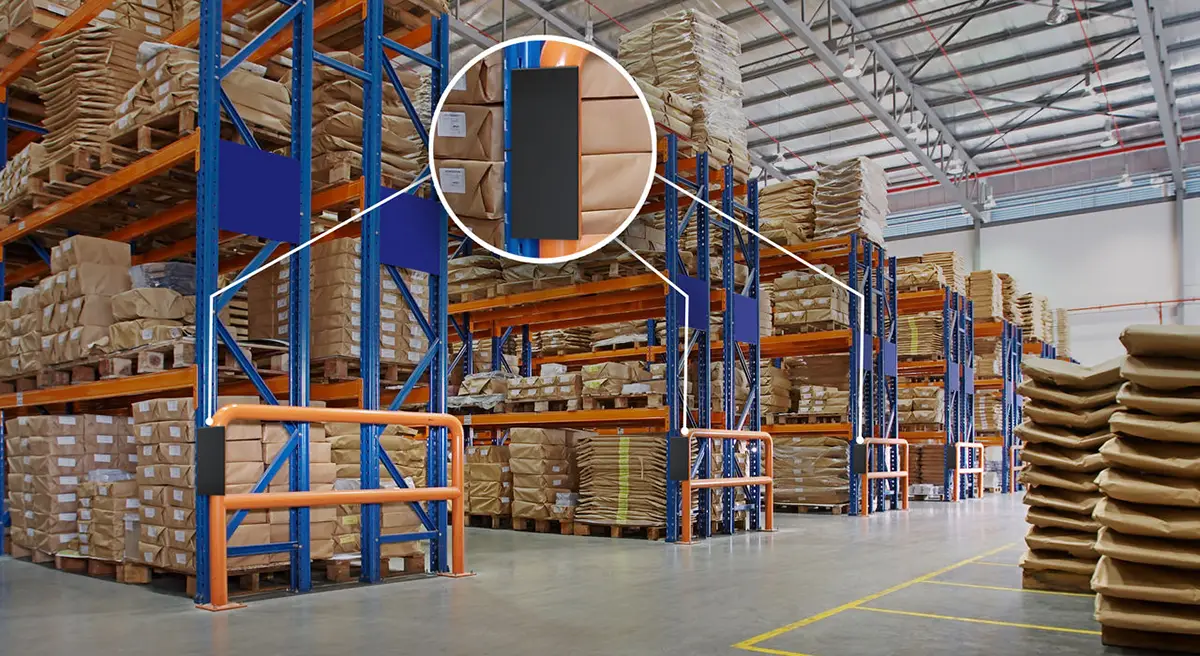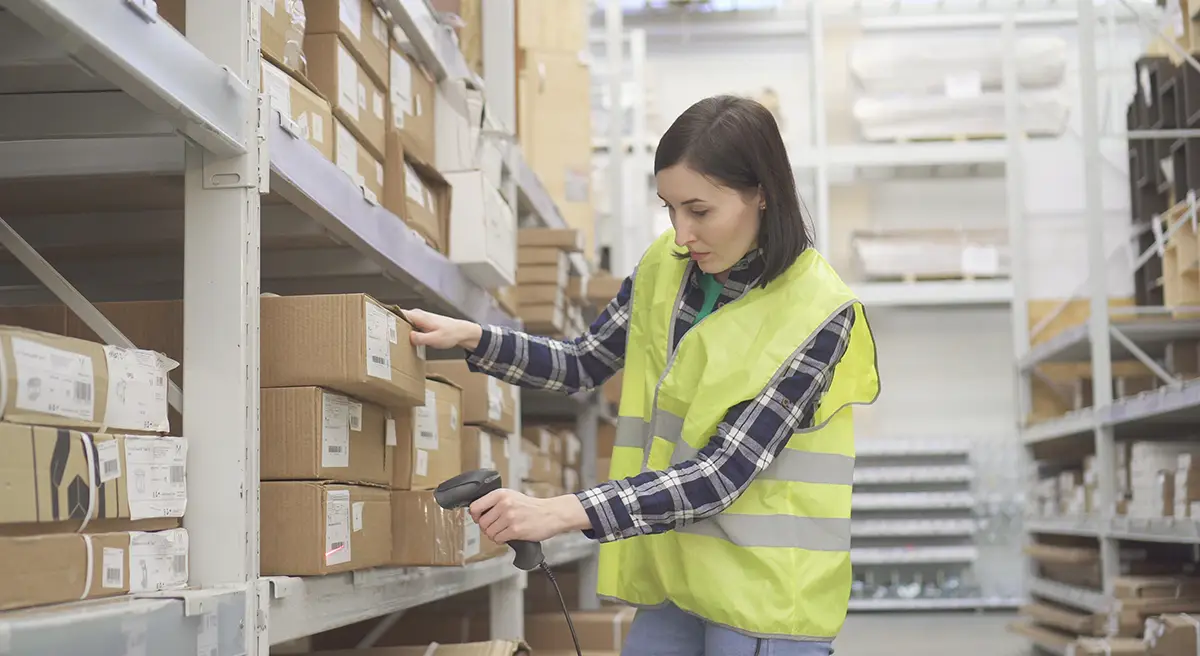
Barcodes have been the backbone of supply chain tracking for over 40 years. Today, more than 5 billion barcode scans are made worldwide every single day, making them one of the most widely used identification technologies in history. They’re cheap, simple, and effective—which is why nearly every industry, from retail to healthcare, still relies on them.
But as supply chains grow more complex, barcodes alone can’t always keep up. Studies show that manual barcode scanning yields inventory accuracy of around 63%, while RFID can push that number above 95%.
The difference is clear: while barcodes remain essential for everyday labeling and compliance, RFID unlocks automation, speed, and real-time visibility that barcodes simply can’t match.
This guide will break down the strengths and limitations of each, and help you decide when to use barcodes, when to use RFID, and when a hybrid system makes the most sense.
What is RFID
Radio Frequency Identification (RFID) is a technology that uses radio waves to identify and track objects automatically. Each item is equipped with a small tag that contains a microchip and an antenna.
When the tag comes within range of an RFID reader, the reader sends out a signal that activates the tag, allowing it to transmit stored data—such as a product number or serial ID—back to the system.
What Are Barcodes
A barcode is a visual representation of data encoded as a series of lines, spaces, or patterns that can be read by optical scanners. Each barcode corresponds to a unique identifier in a database, allowing businesses to track and manage products, shipments, or assets.
Barcodes are printed directly onto packaging or labels and must be scanned one at a time, usually within line of sight of the scanner.
They are widely used across industries for tasks such as inventory management, retail checkout, and shipping due to their simplicity, low cost, and universal standardization.

Difference Between RFID and Barcodes
Both RFID and barcodes are designed to identify and track items, but the way they do it—and the value they provide—is very different. A barcode is a printed label that must be scanned one at a time, usually with line-of-sight. It’s simple, inexpensive, and nearly universal. RFID, on the other hand, uses radio waves to identify tagged items. Tags don’t need to be visible, and readers can capture dozens or even hundreds of tags at once.
This makes barcodes ideal for basic labeling and compliance, while RFID shines in environments where speed, automation, and real-time visibility are critical. Many companies find the best results in a hybrid system, where barcodes handle low-cost compliance requirements and RFID powers efficiency and automation.
RFID vs Barcode: At a Glance
| Feature | Barcode | RFID |
|---|---|---|
| Technology | Printed label, scanned with optical reader | Radio waves transmit data from tag to reader |
| Line of Sight Needed | Yes | No |
| Read Speed | One at a time | Dozens to hundreds simultaneously |
| Durability | Can wear, fade, or be damaged | Tags are more durable, can be embedded/encased |
| Data Capacity | Limited (basic ID only) | High (can store serial, batch, sensor data) |
| Accuracy | ~63% average inventory accuracy | 95%+ inventory accuracy |
| Use Cases | Shipping labels, compliance, POS | Inventory management, asset tracking, automation |
| Cost per Tag | Very low (fractions of a cent) | Higher (varies by passive/active tag type) |
Benefits and Disadvantages of RFID vs. Barcodes
Both RFID and barcodes are powerful identification technologies, but they serve different needs. RFID shines when automation, speed, and real-time visibility are critical, while barcodes remain the go-to solution for low-cost, universal labeling.
Understanding the advantages and trade-offs of each can help you decide whether to stick with one system—or adopt a hybrid approach that leverages both.

Benefits of RFID
- Speed & Automation: Capture hundreds of tags at once without line-of-sight.
- Accuracy: Push inventory accuracy to 95%+ compared to ~63% with manual barcode scans.
- Data Capacity: Store detailed info like batch numbers, serials, and sensor data (temperature, humidity, shock).
- Durability: Tags and readers can be embedded or encased inside objects, making them more resistant to wear and tear.
- Visibility: Enable real-time location tracking across the supply chain.
Disadvantages of RFID
- Higher Cost: More expensive than printed barcodes, especially active passive tags.
- Infrastructure Investment: Requires readers, antennas, and system integration.
- Environmental Interference: Overall performance can be negatively affected by metals, liquids, or improper tag placement.
- Complexity: Setup and tuning require expertise.

Benefits of Barcodes
- Low Cost: Labels cost fractions of a cent, making them ideal for high-volume products.
- Simplicity: Easy to print, apply, and scan with minimal setup.
- Universality: An established global standard across retail, healthcare, logistics, and more.
- Reliability: Accurate and consistent when scanned correctly.
- Compliance: Required for shipping, retail, and regulatory labeling in many industries.
Disadvantages of Barcodes
- Line-of-Sight Required: Each code must be scanned one at a time.
- Lower Accuracy: Average inventory accuracy hovers around 63%.
- Limited Data Capacity: Stores only basic identifiers, requiring database lookups.
- Durability Issues: Labels can fade, tear, or smudge, making them unreadable.
- Manual Labor: Slower than RFID, with more reliance on staff to capture data.
When to Use RFID vs. Barcodes
Choosing between RFID and barcodes depends on your business needs. If your priority is low cost, simplicity, and universal compatibility, barcodes are the right tool. They’re ideal for compliance labeling, shipping documentation, and retail checkout where every item is already expected to have a printed code.
RFID, on the other hand, is best when speed, accuracy, and visibility are critical. Warehouses and distribution centers benefit most from RFID when they need to validate shipments automatically, perform rapid cycle counts, or track high-value assets in real time. While tags and infrastructure require more investment, RFID quickly pays off in environments where manual scanning creates bottlenecks, errors, or safety risks.
For many organizations, the smartest approach is a hybrid system: use barcodes for basic labeling and compliance, and add RFID where automation delivers the biggest ROI. This way, you keep the cost benefits of barcodes while unlocking the efficiency gains only RFID can provide.
| Use Case | Barcode | RFID |
|---|---|---|
| Retail Checkout | Standard UPC/EAN barcodes scanned at point-of-sale terminals | Not commonly used at POS, but RFID supports self-checkout and theft prevention |
| Shipping & Receiving | Labels on cartons/pallets scanned with handheld scanners for verification | RFID portals/tunnels automatically validate entire shipments in seconds |
| Inventory Management | Manual cycle counts with barcode scanners | Automated cycle counts with 95%+ accuracy, real-time location visibility |
| Asset Tracking | Equipment labeled with barcodes for ID and database lookup | High-value assets tagged with RFID for real-time location and condition monitoring |
| Compliance & Labeling | Barcodes required on food, pharma, and consumer packaging for regulations | RFID complements barcodes with traceability, cold chain monitoring, and recalls |
| Workforce Safety | Barcodes rarely applied for personnel | RFID badges used for access control, time/attendance, and emergency mustering |
Conclusion
Barcodes and RFID aren’t competing technologies—they’re complementary tools that solve different challenges. Barcodes remain the most cost-effective way to label, track, and comply with industry standards, while RFID delivers automation, speed, and real-time visibility that barcodes alone can’t provide.
The right choice comes down to your goals. If you need simple, low-cost identification for everyday transactions, barcodes are more than enough. But if your business demands greater accuracy, faster processes, and actionable data, RFID is the smarter investment. In many cases, the best strategy is a hybrid approach, combining barcodes for compliance with RFID for efficiency and control.
As supply chains become faster and more complex, companies that leverage both technologies effectively will be better equipped to cut costs, improve accuracy, and meet rising customer expectations.
Interested in RFID?
An RFID tracking system can help organizations of all sizes improve their supply chain efficiency. Contact the CYBRA team to schedule a demo today.















